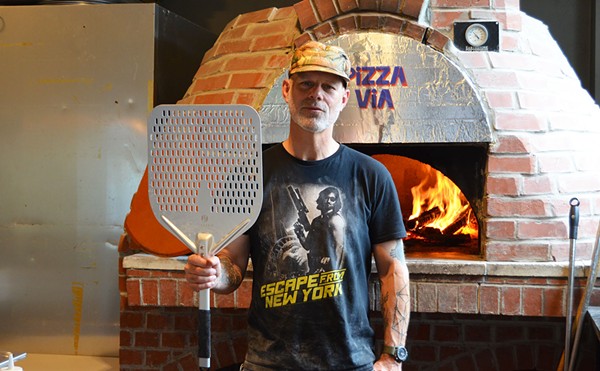Of course, these days there aren't many Westerners in need of an introduction to the joys of raw tuna, salmon or mackerel, and in some areas sushi is more common than McDonald's.
There are plenty of reasons for sushi's recent ascendancy — Japan Airlines' decision in the early 1970s to outfit its airplanes with refrigerated containers to ferry tuna back to Japan, our desire to eat healthy foods, sushi's elegance, its flavor — all of which are explored with admirable depth in what I think is one of the best food books of 2007, Sasha Issenberg's The Sushi Economy.
For Issenberg, the global sushi trade — which spans from the waters off Nova Scotia to the cafés of Buenos Aires to, presumably, the reach-in cooler at Straub's — is the perfect vehicle for an exploration of globalization, as well as the cuisine's history and cultural significance. (Tidbit: The Japanese once thought that otoro — the fatty belly meat of the bluefin tuna, which today is the most prized cut — was suitable only for cat food.)
But for all of Issenberg's detailed exegesis on the economic forces that conspired to make sushi the gustatory Big Kahuna it is today, no explanation carries quite the resonance as the story of Ichiro Manashita, the California sushi chef food historians generally credit with creating the California roll in the early 1970s.
By wrapping cooked crab, avocado and mayonnaise into a sushi roll, Manashita created a dish filled with fatty flavors that were familiar to the Western palate. Similar to what was commonly said of marijuana, the concoction provided an introduction to its more serious relations, such as, in the case of sushi, the raw sea urchin gonads known as uni.
But familiarity breeds contempt, and Issenberg confides that many of today's popular sushi chefs, turning their collective back on the thousands of tins of imitation crab meat that got them there, spurn customers who order the California roll, feeding them only the most measly scraps of fish for the rest of the meal.
I have to wonder, then, what I'd be served after inhaling a three-day-old California roll I picked up at Straub's the other day. I can only imagine that any sushi chef worth his tobiko would have to feed me a deadly little finger of blowfish organ nigiri.
And I probably would have deserved it.
No doubt, store-bought sushi is crap. They may advertise that it's made daily, and that may be so, but somewhere along the way the raw fish turns rubbery. The rice, usually a nice balance to the fish's intensity, turns pasty, taking on the pungent flavor of old fish. The entire enterprise would be a wash were it not for the sheets of seaweed that somehow maintain their integrity in the face of these many insults.
But if store-bought sushi is crap, a three-day-old store-bought California roll is execrable. The imitation crab, once musky, has turned musty. The pasty rice has gelatinized, and the slices of avocado now bear the color and consistency of a newborn's stool. Oh, I suppose the seaweed sheet has held up pretty well, but now it works only to accentuate the roll's viscous contents.
Globalization be damned! With sushi like this, it's a wonder we don't return to our isolationist spaghetti-and-meatballs ways.
Seen a foodstuff you're too timid to try?Malcolm will eat it! E-mail particulars to: [email protected]





